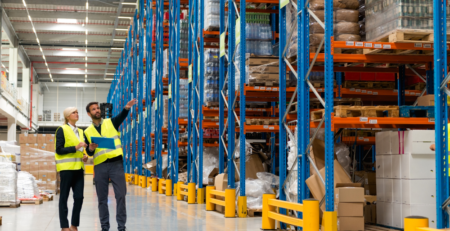The Evolution of Plastic Pallets: From Simple to Sophisticated Designs
Plastic pallets have come a long way since they were first introduced in the 1960s. Initially, these pallets were made of simple molded plastic, which was considered an improvement over traditional wooden pallets. Over the years, the design and technology used in plastic pallets have advanced significantly, leading to the development of sophisticated pallets that offer many advantages over traditional pallets.
One of the biggest advantages of plastic pallets is durability. Unlike wooden pallets that can easily crack or break, plastic pallets are designed to last for many years. They are also resistant to water and moisture, which is essential for industries that require hygienic transportation of goods. Additionally, plastic pallets are easy to clean, making them ideal for industries that deal with food and pharmaceuticals.
The evolution of plastic pallets has led to the development of sophisticated designs that are tailored to specific industries. For instance, pallets used in the food industry are designed with ventilation and drainage features to prevent the growth of bacteria and ensure the safe transportation of food items. Pallets used in the automotive industry, on the other hand, are designed to withstand heavy loads and rough handling.
Another significant improvement in plastic pallet design is the development of nestable and stackable pallets. Nestable pallets have a design that allows them to be nested together when not in use, which saves a significant amount of space compared to traditional pallets. Similarly, stackable pallets can be stacked vertically, which also saves space in storage and transportation.
In recent years, manufacturers have also introduced reusable plastic pallets made from recycled plastic materials. These pallets are environmentally friendly and cost-effective, making them a popular choice for companies that want to reduce their carbon footprint and save money on pallets.
FAQs
1. What are plastic pallets made of?
Plastic pallets can be made of different materials, including high-density polyethylene (HDPE), polypropylene (PP), and recycled plastic materials.
2. Are plastic pallets more expensive than wooden pallets?
While the upfront cost of plastic pallets may be higher than wooden pallets, they offer a longer lifespan, durability, resistance to water and moisture, and ease of cleaning, making them a cost-effective option in the long run.
3. Are plastic pallets recyclable?
Yes, most plastic pallets are made from recyclable materials and can be recycled at the end of their lifespan. Reusable plastic pallets made from recycled plastic materials are also available in the market.
4. Which industries use plastic pallets?
Plastic pallets are used in various industries, including food and beverage, pharmaceuticals, automotive, retail, and logistics, among others.
5. What are some of the advantages of plastic pallets over wooden pallets?
Plastic pallets offer several advantages over wooden pallets, including durability, resistance to water and moisture, ease of cleaning, nestable and stackable designs, and environmental friendliness, among others.
#Evolution #Plastic #Pallets #Simple #Sophisticated #Designs



Leave a Reply
You must be logged in to post a comment.